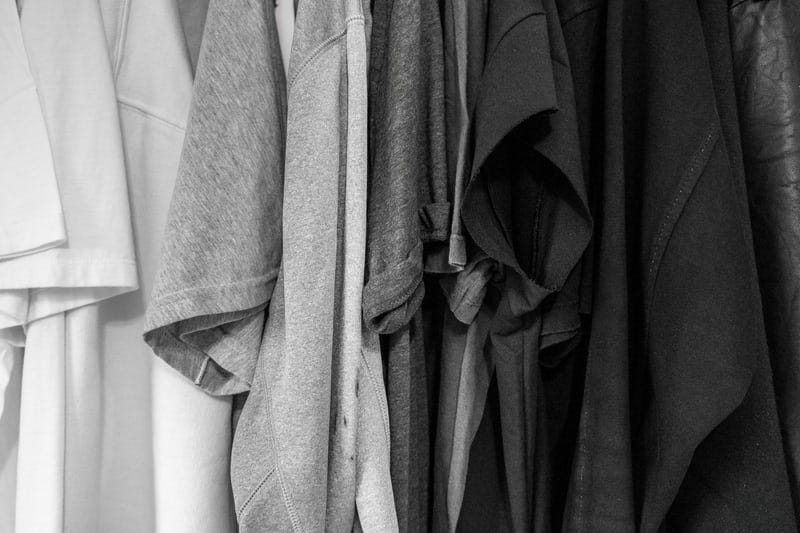The wealthy crave security, rich crave luxury, and the poor crave image.
There’s nothing more valuable and enticing than scarcity and pleasure. We are all humans and want to feel good. From babies to Harvey Weinstein, we all find pleasure in different activities and materialistic items. Consequently, with a higher net worth, the options get even more dangerous.
After a certain amount of discretionary, disposable income and pent up savings, the wealthy start digging into collectibles, wine, fine art, NFTs (non-fungible tokens), you can learn about what the heck these are here, cryptocurrency, vacation homes, and a bunch of other unnecessary pleasures that they throw their money at partly due to boredom and addiction. Treasuries, commodities and FAANG stocks aren’t hot enough.
Yet, what is consistent across all millionaires and above is what they spend and choose to portray themselves as. When we think of a billionaire, we portray them as a Chanel lover with golden rings and designer clothing yet in reality, this persona and priorities have shifted for the better.
No doubt the luxury market is targeted to them. They are the ideal consumers who can afford almost anything and not go broke. They look the best in them and deserve it. There’s a Gucci and Louis Vuitton on Park Ave and on Hollywood Blvd for a reason not in Tulsa or in the middle of Kansas due to the buyers market and demographic of consumers. Where the rich are located, stores follow.
Yet what these billion-dollar luxury brands are not able to wrap their heads around is the evolving style of what it really means to be rich. Perception versus reality.
As hard as it is to believe, if you are truly wealthy you have no reason to show it off. Showing off doesn’t help anyone. It doesn’t get you the deals to earn more wealth, doesn’t make others feel good and instead envious, doesn’t help you get ahead — especially in line and it convinces others you aren’t a personable relatable person. First impressions matter and their purpose isn’t to impress others anymore.

The Era of Stealth Wealth
Since my parents migrated to the U.S., they adopted the frugal minimalist stealth wealth lifestyle. The reason being is because one, everything is twice as expensive as it is in Poland and two, they had no reason to show off anything. In the 90’s, if you wore a watch on the streets of New York, prepare for it to be snatched off your hand in broad day light.
These are just some of the reasons they’ve always stayed grounded, humble and never attempted to show off. Even amongst family members such as our cousins to grandparents, we always downplay what we paid or are worth. The more you are worth, the more you are expected to pitch in to everything which can hurt you financially. There’s nothing wrong with blurring the lines about your financial life to keep you safe.
Till this day we choose to live like we have less to get further ahead and I can attest it has worked in our favor ever since. People will naturally like you more because your personality not jewelry shines.
Hoodies and Crocs
Stealth wealth has always been a popular lifestyle trend amongst the tech giants in Silicon Valley and catching on in other major cities such as in New York and Los Angeles. Atlanta and Miami need some work.
From Zuckerberg to Cook, looking like a hillbilly or college student is the new style that pays. Personally, part of the reason why I have 6 pairs of the same white shirt isn’t because I’m lazy rather because as Zuckerberg often states, “reducing the amount of decisions you make on non-important things will help you prioritize what’s vital to concentrate on for your day.”
Clothes may be important for you so choose to spend less time on something else. For me and Zuck, clothing and food are huge distractions in the morning that must be eliminated.
So if the rich drive Hondas and wear Gap, where are the gullible consumers boosting sales for the luxury market?
You named it. The poor.

Downward Trend
Majority of middle to lower income consumers are allured and fixated on image and brand. They don’t have their priorities straight, partly due to financial literacy and what they perceived as valuable growing up. The less you have, the more you naturally want and until you attaint it, you don’t realize how meaningless it is.
Logos are flashy, the leather is stiff and the price tag screams rich yet in reality with 80% of car owners who’ve gone into debt to buy the vehicle of their dreams and that handbag they cannot afford, it’s worrisome to see that the payoff is nowhere in sight.
Now don’t get me wrong, spending a little more can save you a lot. Being cheap doesn’t help you since you’ll end up spending more as opposed to buying investment quality goods as frugal minimalist that last longer.
Yet, as a society, we are obsessed with a few flashy name brands due to scarcity and appeal as they are the oldest in the industry and aren’t usually guaranteed to be the best. No matter how high your salary or net worth may be, avoiding luxury goods shouldn’t be hard and a practical choice considering most of it is money down the drain. The main reason someone would purchase goods like these is to show off. That’s mainly it since I guarantee you there’s another replica out there.
A sense of accomplishment and pride with owning Gucci screams selfishness more than hardworking since you clearly like to shop. Unfortunately despite the financial hardship and lack of financial literacy most consumers in the U.S. have not able to dish out an extra $1k in cash for any sort of emergency that may come up, those who aren’t able to afford these items yet still purchase them, don’t behave rationally and dig a deeper hole for themsleves.
They prefer to buy things they don’t need with money they don’t have for people they don’t know or even worse, like.

Breakdown of The Ultimate Luxury Consumer
Ideally, the consumer who is fit to purchase occasional (up to you to define) luxury items would be someone who earns a top 10% salary, half a million or above since due to inflation, exchange rate costs, shipping fees, scarce materials and gauged prices, merchants charge a fortune for something that could cost much less.
The problem with luxury is the after-effect. Like alcohol, if you don’t set boundaries, you could shop till you drop and more often than not people who cannot afford them tell themselves, “this is a present” and “a once in a while purchase for fun” which turns into a cycle.
Thankfully luxury isn’t luxury anymore. It’s for someone who isn’t prudent about their spending choices, even if they could afford it they have many options elsewhere.
Now that we’ve defined the WHY, let’s get a better sense of the psychology behind the customer and WHERE they come from.
WHO, WHAT, WHEN, HOW?!
Compared to the traditional luxury consumers of the 19th century (Westerners, elite, upper-class), luxury shoppers are now defined by youth culture: GenZ and Millennials.
These are Millennials in their first or second job, ready to begin the American Dream of starting a family, still dealing with the burden of student loan debt from their overhyped Ivy League experience and are obsessed with social media.
How much do they earn?
Dependent on the industry, you can learn about the most lucrative jobs here, Millennials are at the point where they have some sort of an established nest egg and savings to splurge a bit if they work in in-demand fields of finance, law, tech or healthcare or have built up their worth elsewhere.
If this is the case, they upper class Millennials are considered: HENRY’s (High Earners, Not Rich Yet).
So where do HENRY’s come from?
Asian shoppers drive global luxury growth. By 2025, Chinese luxury consumers will account for 50% of global luxury spending. Luxury spending in the U.S, Italy, Japan, and France is also on the rise especially during the pandemic with not enough to spend on and too much savings which inevitably turned into a problem.
WHY
Although everyone has their own reasons there are some ubiquitous reasons why people shop til they drop.
These are:
-The Need for Uniqueness
-Costly Signaling and Status
-Building the Self and Self-Narrative

Psych 101
Luxury purchases are hedonic, they trigger the release of dopamine. Luxury shoppers will buy goods to make themselves or others feel good.
They tend to be impulsive or for gift-giving (in Deloitte’s study, 20.5% of Millenials bought a high-end luxury item for a particular occasion and 18.5% bought one when they wanted “to treat” themselves).
Luxury customers feel power from spending big and satisfaction from obtaining exclusive, rare, and quality products and unfortunately are rarely concerned with the environment, including social and political issues. You can learn about which class really cares about ESG and the environment here.
Bottom line: People love uniqueness, inclusivity, scarcity and exclusivity.
Eyeing Trends
Stealth wealth is back and harder to find than ever.
Shoppers are finally adopting this skeptical poor but real rich trend buying from brands that are more discreet. Coupled with the emerging trend of “quiet luxury”, luxury consumers are finding new ways to signal their wealth and status.
Luxury goods are no doubt a convenient reminder of one’s self worth but finances, not really. They are a quick way to leave a quick impression to make society perceive people as more valuable yet building influence, your brand online and being grounded and average is better. There’s nothing wrong with being average.
I’m not here to say there’s anything wrong with luxury goods, products and fast fashion. I own some classic staple investment pieces myself including the jewelry I’ve been wearing for the past several years and have clothes that aren’t from the consignment or thrift shop. We’ve been given gifts from these prime retailers and we give the same back.
We’re all guilty! We have to live!
We all want something we don’t have and as a result, want to be a part of an exclusive group. From country clubs to anything “private” or “reserved”, we want it. It’s our nature to be curious but remember, it’s all a marketing tactic to get you to spend more of what you don’t necessary need nor want in the first place.
Especially as life gets back to normal, prioritize what you need. With the national savings rate up 30%, don’t break your bad habits now! You most likely have already what you need.

